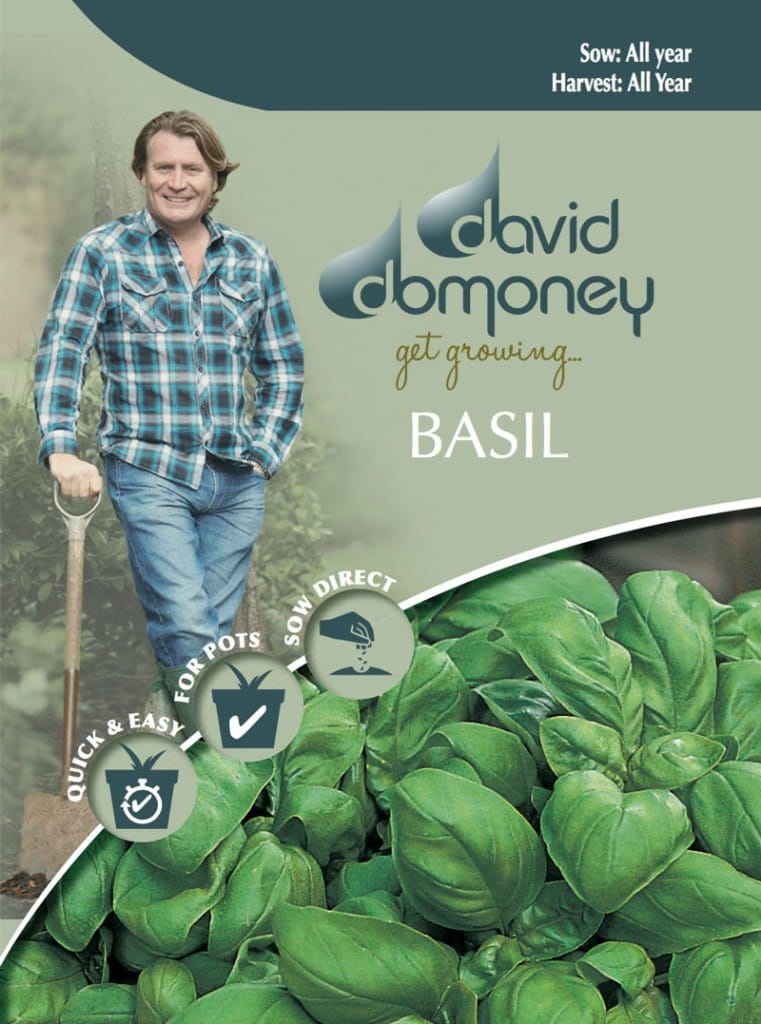Basil
Basil Sweet
A classic and much loved basil variety originally from around Genoa in Italy, where it was cultivated for its exceptionally large, sweet tasting and wonderfully aromatic leaves. Traditionally used in a huge variety of Mediterranean dishes, ranging from pesto to pasta and salads, it is one of the best money saving crops you can grow. Buying fresh basil in the shops can be very expensive but huge quantities of leaves can be harvested regularly from just one packet of seeds.
Growing Advice

Sow Indoors
Sow indoors all year round. If you intend to grow basil in pots on a windowsill you can sow at any time of year. Sow thinly 0.5cm deep into small pots of compost. Water well and place in warm, light position, away from cold draughts and out of intense, direct sunlight. Keep the compost just moist and be careful not to overwater, the compost should almost dry out before it is watered again. Seedlings should start to appear in approximately 7-14 days. Thin out the little seedlings to 4cm apart when they are large enough to handle. If you plan to harvest them as baby leaves, then no thinning is necessary. Always handle seedlings by the leaf and not the delicate stem which is easily crushed. Once established, a regular liquid feed will help maximise crops.
Sow Outdoors
Sow outdoor May to June. To grow really big crops it is best to grow basil outdoors during the summer months. Choose a sunny, sheltered location for best results and wait until the soil has warmed up, ideally to around 10°C+. Then sow thinly directly where plants are to grow. Make a shallow trench 0.5cm deep and cover the seeds with fine soil. Sowing in lines 10cm apart will make it easier to identify and remove any weeds that may appear. Keep the soil moist and weed free. Thin out the weaker seedlings if plants become overcrowded. Repeat sowings will ensure a continuous supply throughout the summer. To extend the growing season, early and late sowings are best made under cloches. Once established, a regular liquid feed will help maximise crops.
Top Tips About Seeds
- Once watered, basil seeds form a jelly around themselves, this helps them to stay hydrated during the early stages of growth
- Once the seed packet has been opened, basil seeds can be stored in an airtight container until required for repeat sowings.
Growing in Containers
Basil is ideal for sowing direct into patio pots and containers, where fresh leaves can be readily available throughout the summer. Year round crops of coriander, chives, parsley, sage and thyme can also be grown indoors in pots on a windowsill.
Common Problems
Usually basil is easy-going and problem free however in exceptionally hot dry summers it can be affected by aphids or by mildew if the plants are weakened. This can be avoided by watering freely during hot dry weather. It’s always preferable to water in the morning.
Harvest
Harvest all year round, outdoor plants from June. Harvesting basil can be done by picking a few leaves at a time, as required. This way lots of little harvests can be made continuously over a long period. For larger crops harvest the entire top two thirds of the plants. The base will then regrow for a second harvest, although this may take a little while. If flowers develop these should be removed to prolong the harvest of leaves.
Ideas for using your basil
The very best way to preserve large crops of basil leaves is by making amazing pesto and freezing it for use throughout the year. Grind up a handful of mixed nuts then throw in lots of basil. Add some grated strong cheese such as parmesan or mature cheddar and pour in virgin olive oil until it reaches the right consistency. Spoon into ice cube trays and freeze. Bag up the cubes so the ice cube trays can be used for the next batch. When you need them just melt a cube or two into whatever dish you are cooking. To make your basil go even further, try blending sweet peppers into the mix too.

